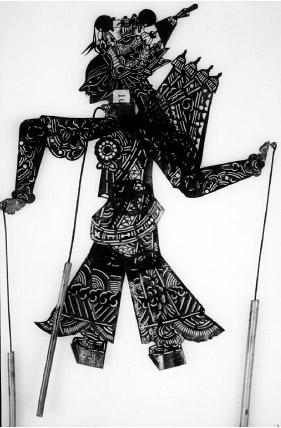CONSERVATION OF CHINESE SHADOW FIGURES: INVESTIGATIONS INTO THEIR MANUFACTURE, STORAGE, AND TREATMENTLISA KRONTHAL
1 INTRODUCTIONAsian shadow theater is a dramatic art form that has survived centuries to tell historic tales and myths that remain relevant in contemporary cultures and societies. A comprehensive collection of 19th-century Beijing, East City, type shadow figures was acquired for the American Museum of Natural History (AMNH) by the renowned sinologist and ethnographer Berthold Laufer (187?–1934). The small skin figures were carved and painted to project vividly colored and detailed images upon the screen. Articulated limbs, detachable heads, and magnificent scenery enhance the fantastic stories and tales (fig. 1). There are similar collections of East City type shadow figures in the United States and Europe.1 The puppets within these collections have comparable condition issues due to a traditionally applied coating that remains sticky over time and to the inherent fragility of the finely carved skin, which is prone to tears and losses. The AMNH archives contain extensive correspondence between the keepers of these collections, primarily concerning the problematic coating. These documents show a clear attempt to resolve condition issues using a variety of materials and techniques, including applying Scotch tape for tear repair, sandwiching puppets between sheets of waxed paper, and completely removing the coating. Once considered acceptable, these methods of treatment are no longer used, as they often left individual puppets as well as whole collections irreversibly damaged. Although the coating is problematic, its historic importance makes its removal unacceptable. Its preservation was considered paramount in this project, and treatment procedures that were compatible with it needed development. Additionally, a storage system that would resolve the problems encountered in the past would also need to be designed. |
